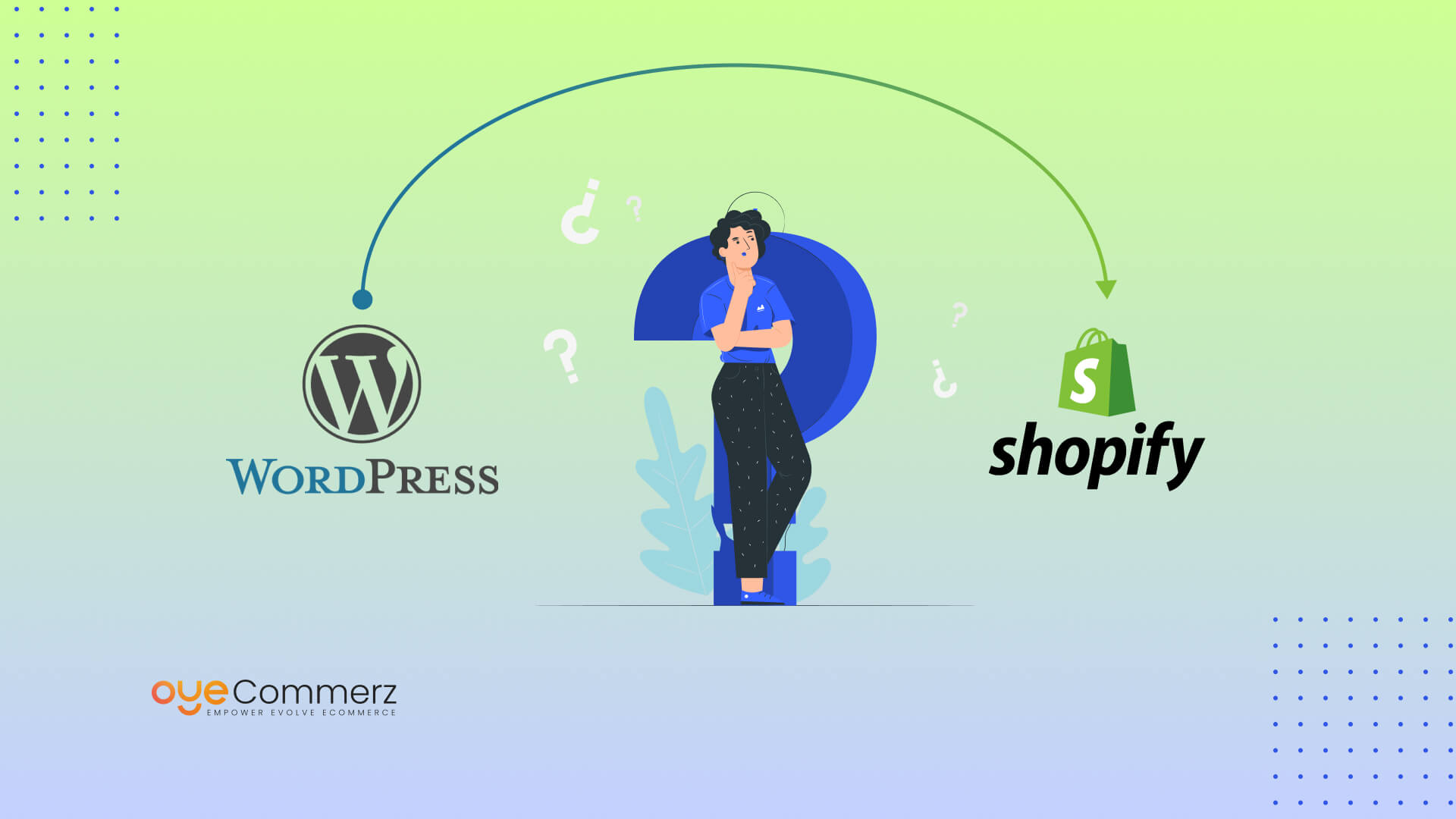Scaling an e-commerce store requires adaptability, growth, and delivering outstanding customer satisfaction.
Considering a move from WordPress to Shopify? You’re probably seeking advanced features, better scalability, and a forward-thinking platform.
This guide outlines the essential steps, strategies, and insights to ensure your migration to Shopify is successful and disruption-free.
Reasons to Transition from WordPress to Shopify
Although WordPress is highly adaptable, managing e-commerce through plugins can hinder seamless growth.
Shopify caters to businesses of all sizes with robust features, enterprise-grade security, and growth-focused solutions.
Shopify's reach extends to over 4.5 million stores globally in 2024, confirming its leadership in the e-commerce space.
Migrating to Shopify brings advantages such as streamlined order processing, advanced payment features, and better mobile responsiveness.
Here’s your ultimate step-by-step guide to ensure a smooth transition.
Step 1: Evaluate Your Online Store's Requirements
Start by reviewing your store’s current performance and identifying future needs.
Identify bottlenecks such as sluggish performance or excessive reliance on third-party tools.
Shopify’s native functionalities, including Shopify Payments and pre-built themes, simplify operations and boost performance.
Step 2: Plan Your Migration Thoroughly
Migrating without a structured approach can lead to errors, data loss, or unexpected downtime.
Prepare for a seamless move by addressing essential aspects like inventory details, customer databases, and sales records.
Shopify provides tools and third-party apps to simplify the migration process and safeguard important information.
Step 3: Tailor Your Shopify Experience
Shopify’s flexible themes allow you to reflect your brand identity seamlessly.
Browse the Shopify Theme Store for templates or modify them to enhance user experience.
Themes such as “Impulse” or “Prestige” deliver visually stunning layouts and powerful features.
For large-scale operations, Shopify Plus customization ensures a distinctive brand presence.
Oyecommerz provides expert Shopify Plus customization services to elevate enterprise branding.
Step 4: Safeguard Your Search Engine Optimization
A successful migration includes retaining your existing SEO structure to avoid losing search engine rankings.
Shopify tools enable redirection of old URLs to new ones, safeguarding existing traffic.
Customize meta tags and integrate Google Analytics to track performance post-migration.
Reports indicate that 70% of websites experience temporary traffic dips post-migration without proper SEO management.
Step 5: Integrate Essential Shopify Apps
Unlock advanced features for your store with Shopify’s rich selection of apps.
Enhance customer retention with tools like Klaviyo and Yotpo designed for email and review management.
Oyecommerz offers Shopify API services to integrate advanced tools and streamline processes.
Work with Oyecommerz for custom Shopify app integrations that optimize business workflows.
Step 6: Optimize for Mobile Users
Mobile shopping now represents over half of online purchases, emphasizing the need for mobile-friendly design.
Shopify’s responsive themes ensure your store looks great and functions smoothly on mobile.
Simplify the checkout process for mobile users with Shopify’s secure payment tools like Shop Pay.
Enhance mobile user satisfaction by ensuring fast, intuitive browsing and purchasing.
Step 7: Train Your Team
Training your team to navigate Shopify ensures they maximize its features effectively.
Ensure your team knows how to handle inventory, process orders, and analyze reports.
An informed team will help you leverage Shopify to its full potential, streamlining operations.
Step 8: Test Your Store Before Launch
Before going live, perform comprehensive testing to identify and fix any issues.
Check for broken links, missing redirects, and accurate product details.
Test your payment systems and WordPress migration benefits confirm the checkout process works seamlessly across platforms.
Testing ensures your store is customer-ready, leaving no room for errors on launch day.
Step 9: Promote Your Migration Strategically
A successful migration is a great opportunity to engage and excite your audience.
Use email campaigns and social media to inform customers about the benefits of the new platform.
Emphasize improved speed, security, and shopping experience to encourage repeat visits.
Conclusion: Shopify – The Key to E-Commerce Growth
Switching to Shopify is not just a migration; it’s a leap Shopify migration services for WordPress toward long-term success.
Shopify’s robust tools, scalability, and seamless integrations create an ideal platform for growth.
From small businesses to large enterprises, Shopify provides tailored solutions for all e-commerce needs.
Rely on Oyecommerz for expert guidance throughout your Shopify migration journey.
Let Oyecommerz assist you in leveraging Shopify to enhance customer satisfaction and drive sales.
Take the next step in transforming your store—contact us to start your Shopify migration today.

 Kel Mitchell Then & Now!
Kel Mitchell Then & Now! Mason Gamble Then & Now!
Mason Gamble Then & Now! Robert Downey Jr. Then & Now!
Robert Downey Jr. Then & Now! Romeo Miller Then & Now!
Romeo Miller Then & Now! Jaclyn Smith Then & Now!
Jaclyn Smith Then & Now!